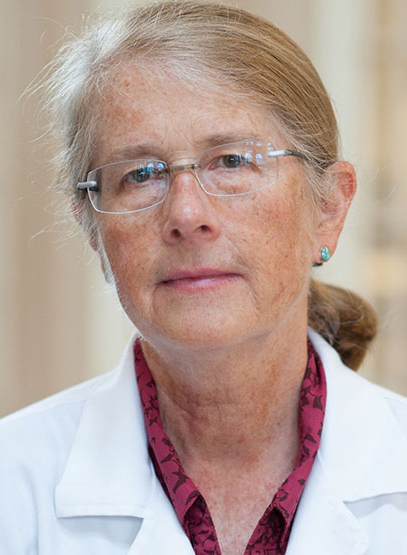Ankle-biting mosquitos that can spread dengue fever are now more common in the Los Angeles area partly due to climate change, say Cedars-Sinai infectious disease experts. Photo by Getty.
New Cases of Mosquito-Spread Dengue Fever Highlight Local Effects of Climate Change
Amid Southern California’s recent record-breaking heat wave and fast-moving wildfires, public health officials reported the third locally-acquired case of dengue fever in the Los Angeles area. Although the events seem unrelated, they actually are connected—and for troubling reasons.
That’s because global warming causes temperatures to rise which, in turn, expands the reach of insects carrying infectious diseases. Species of mosquitoes that thrive in warmer environments are finding newly hospitable homes in places where the climate is warming and the summer heat lingers longer. As a result, physicians in once mild parts of the U.S. are seeing increasing cases of mosquito-borne diseases such as Zika virus, West Nile virus and now dengue fever.

“Warmer weather means warmer pools of standing water, a friendlier environment for breeding mosquitos, especially without very cold winters to kill off the eggs,” said Kimberly Shriner, MD, medical director of Infection Prevention and Control at Huntington Health, an affiliate of Cedars-Sinai. “There is no question that we’re seeing more Aedes mosquitos—the species that carries dengue—because of hotter temperatures.”
Another cause: people are traveling more widely and frequently, said Michael Ben-Aderet, MD, associate medical director of Hospital Epidemiology at Cedars-Sinai. He explained that this increases the odds that a traveler returns home with an mosquito-borne infectious disease, gets bit by one of the many Aedes mosquitos now thriving in Southern California, and that bug carries that disease to someone else.
“Dengue is well known in tropical places like South America, Central America and Puerto Rico,” Ben-Aderet said. “We’ve always had cases in Los Angeles associated with travel, but now we’re seeing dengue patients who didn’t travel—they never left Los Angeles. They were bit by a mosquito locally, which means there likely are other mosquitos with dengue that we haven’t found because we’re not testing for it a lot and many people who get dengue don’t get very sick.”
He added that Southern California is a perfect environment for dengue transmission. “We have mosquitos, a big population and people have been travelling more this year than ever before,” he said.
Bone-Break Fever
The Aedes mosquitos that can spread dengue, as well as Zika and West Nile viruses, started showing up in Southern California about a dozen years ago. While most people are familiar with the ankle-biting tendency of these mosquitos and the proliferation of West Nile virus, they’re likely less aware of dengue and the disease’s symptoms.

Dengue can cause a wide range of symptoms from none at all to very severe, Ben-Aderet said. It starts with a high fever and severe muscle pain, giving it the nickname “break-bone fever.” Dengue often appears with a diffuse red rash that blanches, turning white or the color of one’s skin after pressing on the rash and releasing pressure. Patients can also experience gastrointestinal symptoms like nausea.
The second time someone gets dengue, it can be much worse, said Shriner, who has treated patients with disease during annual medical mission trips to Tanzania with a nonprofit that provides clinical care and medical education. Dengue is a hemorrhagic fever, like the Ebola virus, that can cause bleeding—in this case bruises bloom under the skin from “leaky” blood vessels.
For mild cases, treatment is supportive care: fluids, rest and Tylenol. More severe cases might need intensive care in a hospital. Highly specialized vaccines exist, but they’re primarily intended to help children avoid a dangerous second infection in places like the Philippines where the disease is endemic.
Canary in the Coalmine
For local physicians, the spread of tropical diseases in once milder climates means they must think more broadly when diagnosing a sick patient.
“Whenever I see a patient in today’s world, I need to keep a very open mind about what they might have,” Ben-Aderet said. He added that the sporadic dengue infections we’ve seen from area mosquitos indicate we don’t yet have a “reservoir,” a sustained source of infections to make dengue endemic to Los Angeles. But it could happen in the not-too-distant future, he said.
Shriner emphasized that she doesn’t want people to panic. “We should be worried more about COVID-19 and the flu,” she said.
Still, she cautioned that smaller, novel outbreaks—like the emergence of dengue in Los Angeles—are “canaries in the coalmine” sending a message that we need to pay attention.
“We live in an interconnected world with a fragile climate that is changing,” Shriner said. “We want to approach this scientifically, compassionately and with humanity. This is why curing diseases like malaria in Africa will help us all too.”
Read more on the Cedars-Sinai Blog: Everything You Need to Know About Bug Bites
 English
English Espanol
Espanol 简体中文
简体中文 Tagalog
Tagalog հայերեն
հայերեն 한국인
한국인 Tiếng Việt
Tiếng Việt فارسی
فارسی русский
русский 日本
日本 عربي
عربي